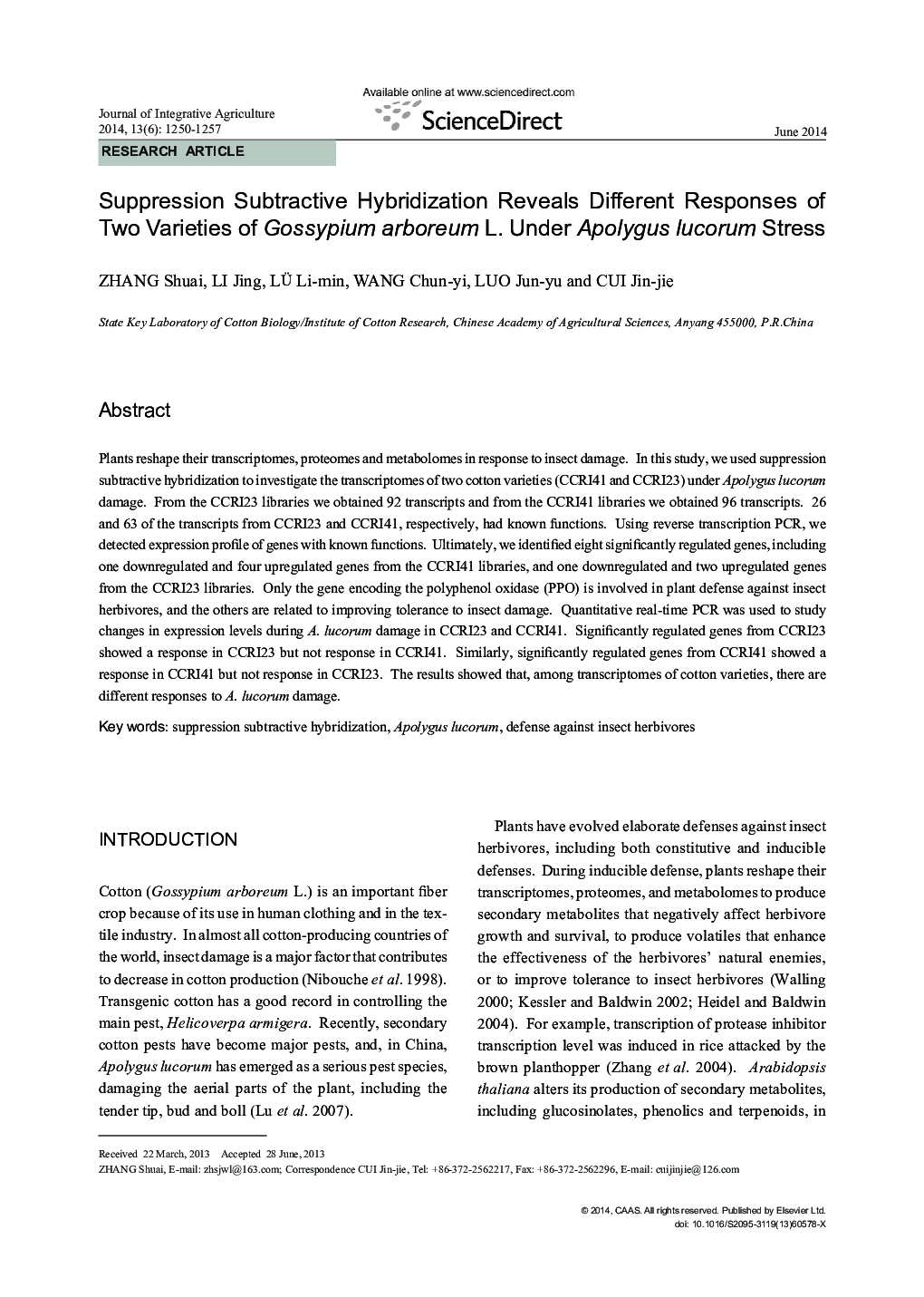| کد مقاله | کد نشریه | سال انتشار | مقاله انگلیسی | نسخه تمام متن |
|---|---|---|---|---|
| 4494546 | 1318719 | 2014 | 8 صفحه PDF | دانلود رایگان |

Plants reshape their transcriptomes, proteomes and metabolomes in response to insect damage. In this study, we used suppression subtractive hybridization to investigate the transcriptomes of two cotton varieties (CCRI41 and CCRI23) under Apolygus lucorum damage. From the CCRI23 libraries we obtained 92 transcripts and from the CCRI41 libraries we obtained 96 transcripts. 26 and 63 of the transcripts from CCRI23 and CCRI41, respectively, had known functions. Using reverse transcription PCR, we detected expression profile of genes with known functions. Ultimately, we identified eight significantly regulated genes, including one downregulated and four upregulated genes from the CCRI41 libraries, and one downregulated and two upregulated genes from the CCRI23 libraries. Only the gene encoding the polyphenol oxidase (PPO) is involved in plant defense against insect herbivores, and the others are related to improving tolerance to insect damage. Quantitative real-time PCR was used to study changes in expression levels during A. lucorum damage in CCRI23 and CCRI41. Significantly regulated genes from CCRI23 showed a response in CCRI23 but not response in CCRI41. Similarly, significantly regulated genes from CCRI41 showed a response in CCRI41 but not response in CCRI23. The results showed that, among transcriptomes of cotton varieties, there are different responses to A. lucorum damage.
Journal: Journal of Integrative Agriculture - Volume 13, Issue 6, June 2014, Pages 1250-1257